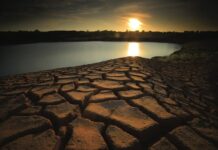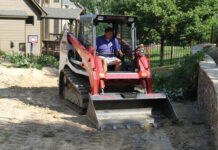
Earlier this month, the Department of the Interior announced it will provide nearly $18 million to ensure ready sources of native seeds and advance a new National Seed Strategy Keystone Initiative.
Native plant communities across the U.S. are being lost every day from habitat loss and other climate related impacts, such as longer wildfire seasons and other extreme weather events. As these plant populations are lost, so too are the ecosystem services they provide, increasing the risk of erosion, the establishment of non-native and invasive species, and additional ecological damage.
While private landowners and public land managers work together to restore landscapes following intense fires or other events causing significant damage, success depends on an adequate supply of locally adapted native seed. As the frequency and scale of restoration needs has increased, the supply of native seeds available for replanting has become strained. According to a recent study from the National Academies of Sciences, Engineering, and Medicine, “the insufficient supply of seeds from native plants is a major barrier to ecological restoration and other revegetation projects across the U.S.”
Collecting, producing, and procuring native seeds is critical for restoring native vegetation on public lands, and special facilities are required to store seeds and safeguard their genetic diversity. The funding and new Initiative will advance the Department’s goals to invest in the infrastructure, tools, research and labor needed for a robust native seed supply chain.
“Nature has spent thousands of years designing plants that fit in place, so we can’t do better than to use that instruction – native seed – in our restoration efforts,” said Bureau of Land Management (BLM) Director Tracy Stone-Manning. “Native seeds stand a better chance of long-term success.”
The National Seed Strategy Keystone Initiative builds on the past 25 years of native seed collection, research and development, including a recent partnership among the BLM, National Park Service, and U.S. Fish and Wildlife Service to coordinate on Seeds of Success collections. This is the next step in building a restoration economy in rural communities across the U.S., while safeguarding biological diversity.
“A reliable, abundant and diverse supply of native seeds is foundational to ensuring that the ecosystems we all cherish can thrive for current and future generations,” said Secretary Deb Haaland.
For articles on similar topics, see:
Seven Tough Trees For Urban Areas & Climate Challenges In 2023











![[VIDEO] Dickies®: Discover Workwear That’s Anything But Uniform](https://turfmagazine.com/wp-content/uploads/2023/06/1647663814-4b1a2a7742790a9b1e97a3b963477850192e1d6a9dfba9b07214a77bae25d6e3-d-218x150.jpg)






























![[VIDEO] Dickies®: Discover Workwear That’s Anything But Uniform](https://turfmagazine.com/wp-content/uploads/2023/06/1647663814-4b1a2a7742790a9b1e97a3b963477850192e1d6a9dfba9b07214a77bae25d6e3-d-324x160.jpg)